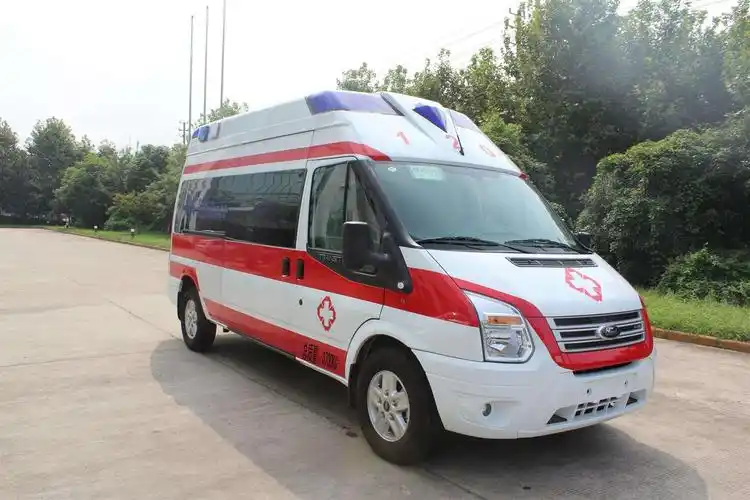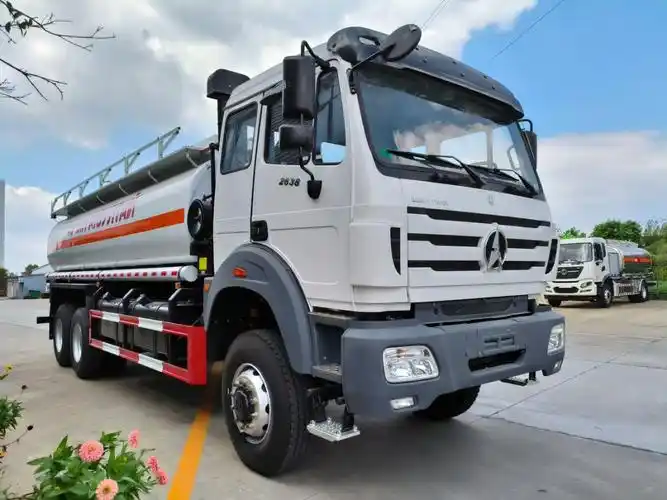Table of Contents
Toggle1. Introduction
When you think of an ambulance, what comes to mind? A flashing light, a blaring siren, and a rush to save lives, right? But there’s so much more to these emergency vehicles than just the dramatic scenes we see in movies. In this article, we’ll dive deep into the world of ambulances, exploring their types, roles, and the technology that makes them essential in emergency services. So buckle up, because we’re about to take a ride through the fascinating realm of ambulances!

2. What is an Ambulance?
At its core, an ambulance is a specially equipped vehicle designed to transport patients to medical facilities. But it’s not just a taxi for the sick; it’s a mobile emergency room! Equipped with life-saving equipment and staffed by trained professionals, ambulances play a crucial role in the healthcare system. They are the first responders in emergencies, providing critical care on the way to the hospital.
Ambulances are often the unsung heroes of our communities. They are there when we need them the most, whether it’s a heart attack, a severe injury, or a sudden illness. The presence of an ambulance can provide a sense of security, knowing that help is just a call away.
3. Types of Ambulances
Ambulances come in various shapes and sizes, each tailored for specific needs. Let’s break down the main types you might encounter.
3.1. Basic Life Support (BLS) Ambulances
BLS ambulances are the most common type. They are equipped with basic medical equipment and staffed by emergency medical technicians (EMTs). These vehicles are ideal for non-life-threatening situations, such as transporting patients who need monitoring but are stable.
Imagine you’re feeling unwell but not in a life-threatening situation. A BLS ambulance can provide you with the necessary care and transport you safely to the hospital. The EMTs on board are trained to assess your condition and provide basic medical assistance, ensuring you’re stable during transport.
3.2. Advanced Life Support (ALS) Ambulances
When the situation is more critical, ALS ambulances come into play. These vehicles are equipped with advanced medical equipment and staffed by paramedics who can perform more complex procedures. Think of them as the superheroes of the ambulance world, ready to tackle life-threatening emergencies with advanced care.
In an ALS ambulance, you might find equipment like cardiac monitors, intravenous (IV) therapy supplies, and advanced airway management tools. The paramedics on board are trained to handle severe medical emergencies, such as cardiac arrest or traumatic injuries. They can administer medications, perform advanced life support techniques, and make quick decisions that can save lives.
3.3. Specialty Ambulances
Some situations require specialized care, and that’s where specialty ambulances shine. These can include neonatal ambulances for transporting newborns, air ambulances for remote locations, and even bariatric ambulances designed for larger patients. Each type is tailored to meet specific medical needs.
For instance, neonatal ambulances are equipped with incubators and specialized monitoring equipment to ensure the safety of premature or critically ill infants. Air ambulances, on the other hand, are used to reach patients in hard-to-access areas, providing rapid transport to medical facilities. These specialty vehicles highlight the adaptability of ambulance services to meet diverse healthcare needs.
4. The Role of Ambulances in Emergency Services
Ambulances are the backbone of emergency medical services (EMS). They provide rapid response to emergencies, ensuring that patients receive timely care. Whether it’s a heart attack, a car accident, or a sudden illness, ambulances are often the first point of contact in the healthcare system. Their role extends beyond just transportation; they stabilize patients and provide critical care en route to the hospital.
Think about it: when you call for an ambulance, you’re not just requesting a ride to the hospital. You’re calling for a team of trained professionals who can assess your condition, provide immediate care, and communicate with the hospital to prepare for your arrival. This seamless integration of services is what makes ambulances so vital in emergency situations.
5. How Ambulances Work
So, how do these vehicles operate? Let’s break it down into two main components: equipment and crew.
5.1. Equipment and Technology
Ambulances are equipped with a variety of medical tools and technology. From defibrillators to oxygen tanks, the equipment onboard is designed to handle emergencies. Many modern ambulances also feature advanced communication systems that allow them to stay in contact with hospitals, ensuring that the receiving facility is prepared for the patient’s arrival.
Imagine being in a situation where someone is experiencing a heart attack. The paramedics can use a defibrillator to restore a normal heart rhythm, while simultaneously providing oxygen and monitoring vital signs. This level of preparedness is crucial in saving lives.
Additionally, many ambulances are now equipped with GPS systems that help them navigate traffic and find the quickest route to the hospital. This technology is a game-changer, especially in urban areas where traffic congestion can delay response times.
5.2. The Ambulance Crew
The crew is just as important as the equipment. Typically, an ambulance is staffed by EMTs or paramedics, depending on the type of ambulance. These professionals are trained to assess patients, provide emergency care, and make quick decisions under pressure. Their expertise can mean the difference between life and death.
EMTs are trained to handle basic medical emergencies, while paramedics have advanced training that allows them to perform more complex procedures. This hierarchy ensures that patients receive the appropriate level of care based on their condition.
The teamwork displayed by ambulance crews is remarkable. They communicate effectively, delegate tasks, and work together to stabilize patients. It’s a high-pressure environment, but their training and experience prepare them to handle even the most challenging situations.
6. The Importance of Timely Response
In emergencies, every second counts. The faster an ambulance can respond, the better the chances of a positive outcome. Studies show that timely medical intervention can significantly reduce mortality rates in critical situations. This is why many cities have implemented systems to ensure that ambulances are dispatched quickly and efficiently.
Consider a scenario where someone is experiencing a stroke. The sooner they receive medical attention, the better their chances of recovery. Ambulance services are often evaluated based on their response times, and many strive to meet strict benchmarks to ensure they are providing the best possible care.
7. Challenges Faced by Ambulance Services
Despite their importance, ambulance services face numerous challenges. Traffic congestion, limited resources, and funding issues can hinder their ability to respond effectively. Additionally, there’s the challenge of public awareness; many people don’t know when to call for an ambulance, which can lead to delays in care.
Traffic congestion is a significant issue in urban areas. Ambulances must navigate through busy streets, often facing delays that can impact patient outcomes. Some cities have implemented measures to create “ambulance corridors” to help mitigate this issue, but it remains a challenge.
Funding is another critical concern. Many ambulance services operate on tight budgets, which can limit their ability to purchase new equipment or hire additional staff. This can lead to burnout among existing personnel and may affect the quality of care provided.
8. Innovations in Ambulance Services
The world of ambulances is not static; it’s constantly evolving. Innovations in technology and practices are making ambulance services more efficient and effective. Let’s explore some of the exciting advancements that are shaping the future of emergency medical services.
8.1. Telemedicine in Ambulances
One of the most significant innovations in ambulance services is the integration of telemedicine. This technology allows paramedics to connect with doctors in real-time while en route to the hospital. Imagine being in an ambulance, and the paramedic is on the phone with a specialist who can guide them through a complex procedure. This capability can be a game-changer, especially in critical situations where every second counts.
Telemedicine enables paramedics to receive immediate advice on patient care, ensuring that they can provide the best possible treatment before reaching the hospital. This is particularly beneficial for patients experiencing severe conditions, such as strokes or heart attacks, where timely intervention is crucial.
8.2. Drones and Aerial Support
Drones are another innovative tool being explored in the realm of emergency services. While they are not yet a standard part of ambulance services, their potential is enormous. Drones can be used to deliver medical supplies to remote or hard-to-reach areas, providing essential resources when time is of the essence.
For example, imagine a rural community where an accident occurs far from the nearest hospital. A drone could quickly deliver a defibrillator or other critical supplies to the scene, potentially saving a life while the ambulance is still on its way. This technology is still in its infancy, but the possibilities are exciting.
8.3. Enhanced Communication Systems
Modern ambulances are equipped with advanced communication systems that allow for seamless interaction between the ambulance crew and hospital staff. This technology ensures that hospitals are prepared for incoming patients, allowing for quicker treatment upon arrival.
These systems can include mobile data terminals, GPS navigation, and real-time data sharing. By providing hospitals with vital information about a patient’s condition before they arrive, medical teams can mobilize resources and prepare for immediate care, which can significantly improve patient outcomes.
8.4. Electric and Hybrid Ambulances
As the world moves towards sustainability, ambulance services are also exploring electric and hybrid vehicles. These eco-friendly options can reduce emissions and operating costs while still providing the necessary power and equipment for emergency medical services.
Electric ambulances are quieter, which can be beneficial in residential areas, and they can also reduce the overall carbon footprint of emergency services. As technology advances, we can expect to see more of these vehicles on the road, contributing to a greener future.
8.5. Training and Simulation Technology
Training is a critical component of effective ambulance services. Innovations in simulation technology are enhancing the way paramedics and EMTs are trained. Virtual reality (VR) and augmented reality (AR) are being used to create realistic training scenarios that allow emergency responders to practice their skills in a safe environment.
These technologies can simulate various emergency situations, from car accidents to medical emergencies, providing trainees with hands-on experience without the risks associated with real-life scenarios. This kind of training can improve decision-making skills and prepare responders for the high-pressure situations they will face in the field.
9. How to Call for an Ambulance
Knowing how to call for an ambulance can save lives. If you find yourself in an emergency, here’s what to do:
9.1. Stay Calm
Take a deep breath. Panic can cloud your judgment. Staying calm will help you communicate more effectively and provide the necessary information to the dispatcher.
9.2. Dial the Emergency Number
In many countries, this is 911. Familiarize yourself with the emergency number in your area, as it may vary.
9.3. Provide Clear Information
Be ready to give your location, the nature of the emergency, and any relevant details about the patient. Here’s a quick checklist of what to include:
- Location: Be as specific as possible. Include street names, landmarks, or any other identifying information.
- Nature of the Emergency: Describe what happened. Is it a medical emergency, a car accident, or something else?
- Patient Information: If possible, provide details about the patient’s condition, age, and any known medical history.
9.4. Follow Instructions
The dispatcher may give you instructions to follow while waiting for the ambulance. This could include performing CPR, using an AED, or other first aid measures. Listen carefully and follow their guidance.
9.5. Stay on the Line
If it’s safe to do so, stay on the line until the dispatcher tells you to hang up. They may have additional questions or instructions that could be crucial for the responding team.
9.6. Prepare for Arrival
If you can, clear a path for the ambulance to reach your location easily. If you’re at home, turn on outside lights and unlock the door to ensure the crew can enter quickly.
10. Conclusion
Ambulances are more than just vehicles; they are a vital part of our healthcare system, bridging the gap between emergency situations and medical facilities. Understanding their types, roles, and the challenges they face can help us appreciate the incredible work that ambulance services do every day.
From the basic life support ambulances that handle non-critical situations to advanced life support units equipped for severe emergencies, each type plays a crucial role in saving lives. Innovations like telemedicine, drones, and electric vehicles are paving the way for a more efficient and effective emergency response system.
In a world where emergencies can strike at any moment, knowing about ambulances and their importance can empower us all to act swiftly and effectively when it matters most. So, let’s spread the word and ensure that everyone knows how to call for help when they need it!
The next time you hear that siren, remember the lifeline on wheels is on its way to save a life. Whether it’s a BLS, ALS, or specialty ambulance, each one plays a crucial role in keeping our communities safe and healthy.











